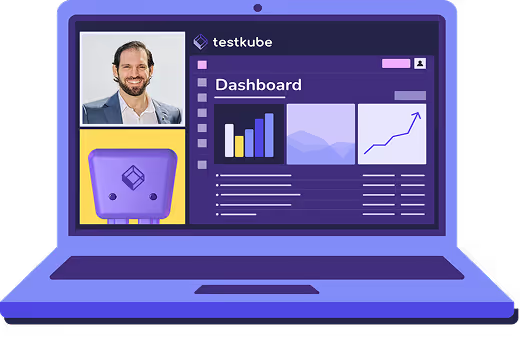Table of Contents
What Does Tools for Testers Mean?
Tools for testers include frameworks and platforms used to verify software quality and performance. They cover automation, performance, defect tracking, and test management, helping teams release software faster and with fewer errors.
Modern QA teams often use several specialized tools together to cover the full testing lifecycle, from functional validation to performance and load testing.
Why It Matters
Manual testing cannot keep pace with modern release cycles. Tools for testers provide the automation and visibility needed to maintain speed and consistency. They help teams:
- Detect issues earlier in development
- Integrate testing into CI and CD pipelines
- Reduce manual effort and human error
- Improve reliability and release quality
- Collaborate efficiently across engineering roles
How It Works
Testing tools simulate real user actions, send API requests, and apply load to systems to verify expected behavior.
They integrate with CI and CD systems to provide automated feedback during each build.
When managed through Testkube, these tools can run inside Kubernetes environments for consistent execution, scalability, and centralized reporting. Testkube acts as the orchestration layer that connects testing frameworks, collects results, and simplifies observability.
Top Categories of Tools for Testers
1. Test Automation Tools
Automate repetitive, regression, and UI tests for web, mobile, and API applications.
Examples: Selenium, ACCELQ, Katalon Studio, Cypress, Playwright, Appium.
2. Bug Tracking and Project Management Tools
Log, prioritize, and manage issues across QA and development teams.
Examples: Jira, Bugzilla.
3. Performance Testing Tools
Measure responsiveness, scalability, and system stability under varying loads.
Examples: Apache JMeter, LoadRunner, Gatling.
4. API Testing Tools
Validate API functionality, performance, and reliability.
Examples: Postman, SoapUI.
5. AI Powered Testing Tools
Use artificial intelligence to generate, maintain, and self heal test cases.
Examples: Testsigma, Functionalize, Testim.io.
6. Test Management Tools
Plan, organize, and track test cases, runs, and results.
Examples: TestRail, qTest.
7. Cross Browser and Device Testing Tools
Verify application behavior across browsers, operating systems, and devices.
Examples: BrowserStack, LambdaTest.
Key Benefits
- Automates time consuming manual testing
- Improves collaboration between QA and development
- Enables continuous validation across environments
- Increases test reliability and accuracy
- Provides clear visibility into overall software quality
How It Relates to Testkube
Most testing tools work independently and require manual coordination. Testkube unifies them in a single, Kubernetes native control plane that scales and standardizes test execution.
- Unified Orchestration: Run any testing framework such as Cypress, Postman, JMeter, or Playwright inside Kubernetes clusters.
- Scalable Execution: Distribute workloads across clusters to accelerate testing and improve reliability.
- Consistent Environments: Ensure that tests run identically across local, staging, and production setups.
- Centralized Observability: Aggregate logs, metrics, and results from every testing framework in one place.
- AI Assisted Testing: Through the Model Context Protocol (MCP) Server, Testkube allows AI agents to create, trigger, and optimize testing workflows automatically.
For testers, Testkube acts as a unified command center that connects every framework into one scalable, observable, and automated testing system.
Best Practices
- Combine automation, API, and performance testing for complete coverage.
- Use containerized tools to maintain consistent environments.
- Integrate testing workflows with orchestration platforms like Testkube.
- Monitor performance trends using centralized dashboards.
- Adopt AI powered tools to enhance test creation and maintenance.
Common Pitfalls
- Running tools separately without orchestration creates inefficiency.
- Overloaded CI and CD pipelines slow feedback cycles.
- Inconsistent environments cause unreliable test results.
- Manual tracking of test outcomes limits visibility.
- Limited scalability prevents enterprise level testing coverage.
Frequently Asked Questions (FAQs)
What are the most common tools for testers?
Popular testing tools include Selenium, Cypress, Postman, JMeter, TestRail, and Jira.
How does Testkube help testers work more efficiently?
Testkube unifies test execution across frameworks, scales workloads automatically, and consolidates logs and results for faster debugging and analysis.
Can Testkube integrate with my existing testing tools?
Yes. Testkube supports any containerized or command line based testing framework, including Cypress, Playwright, Postman, and JMeter.
How does Testkube improve visibility?
It collects and displays all test results, logs, and metrics in one control plane so teams can quickly identify trends and issues.
What makes Testkube valuable for QA teams?
Testkube eliminates fragmented workflows, increases test reliability, and gives QA teams full control over test orchestration and observability.


